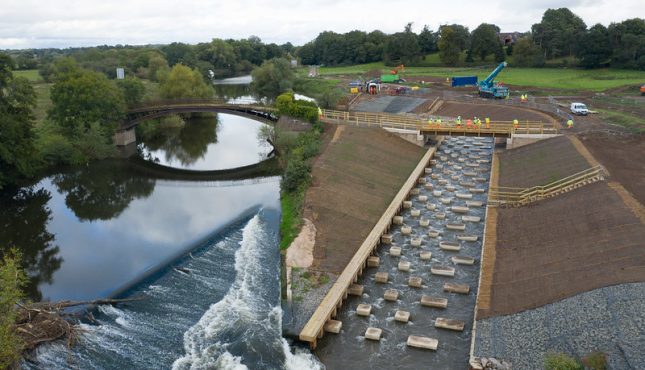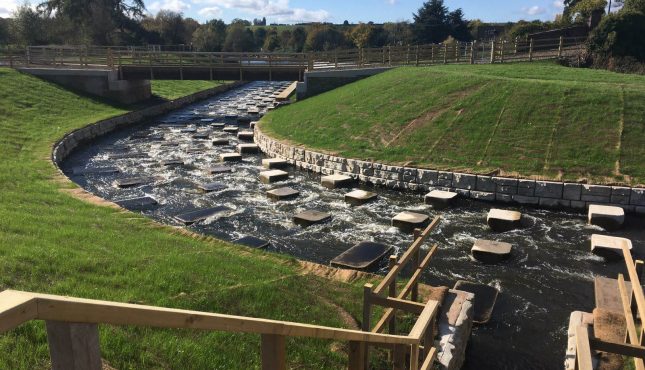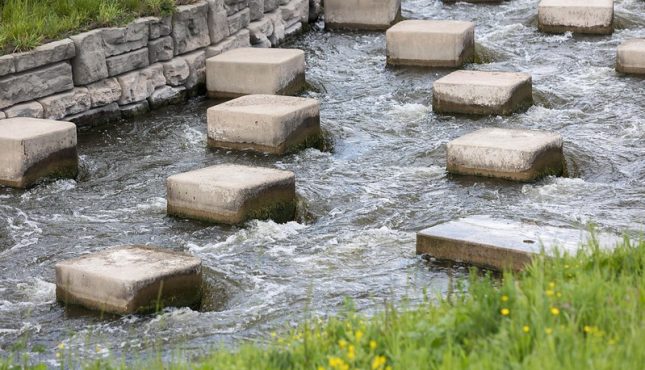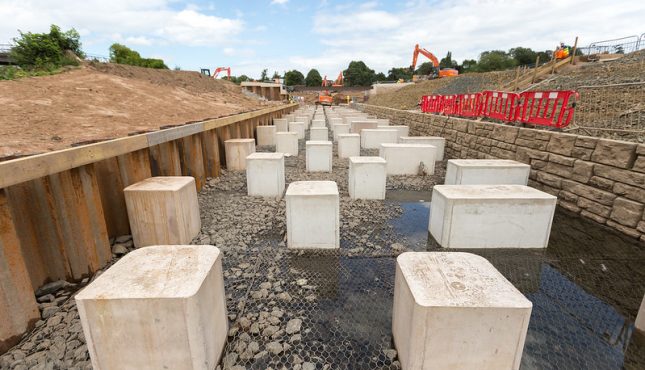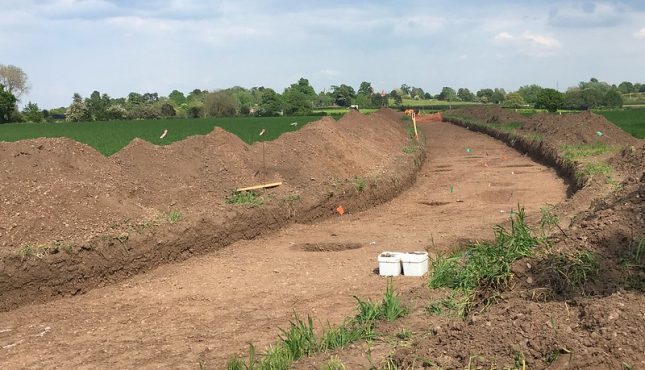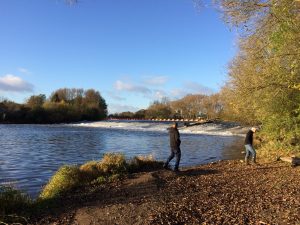Bevere Fish Pass – Facts & Figures
Bevere is the second fish pass that twaite shad and other migratory fish meet on their way upriver. It is located in the village of the same name, 4 km northwest of Worcester city centre.
Construction work on the fish pass began in May 2019, just three months before work started at Diglis. It was the first fish pass to be completed out of the four built along the River Severn. In September 2020, Bevere fish pass was opened to the river.
The 100m long fish pass was designed by FishTek and Kier was the main contractor for the build. Scroll down to watch videos on how the fish pass was designed.
Bevere was most affected by flooding of all the fish pass sites. In 2019, record breaking floods shut the site down all winter and work could only resume in the spring, once the weather started to cooperate!
